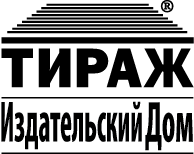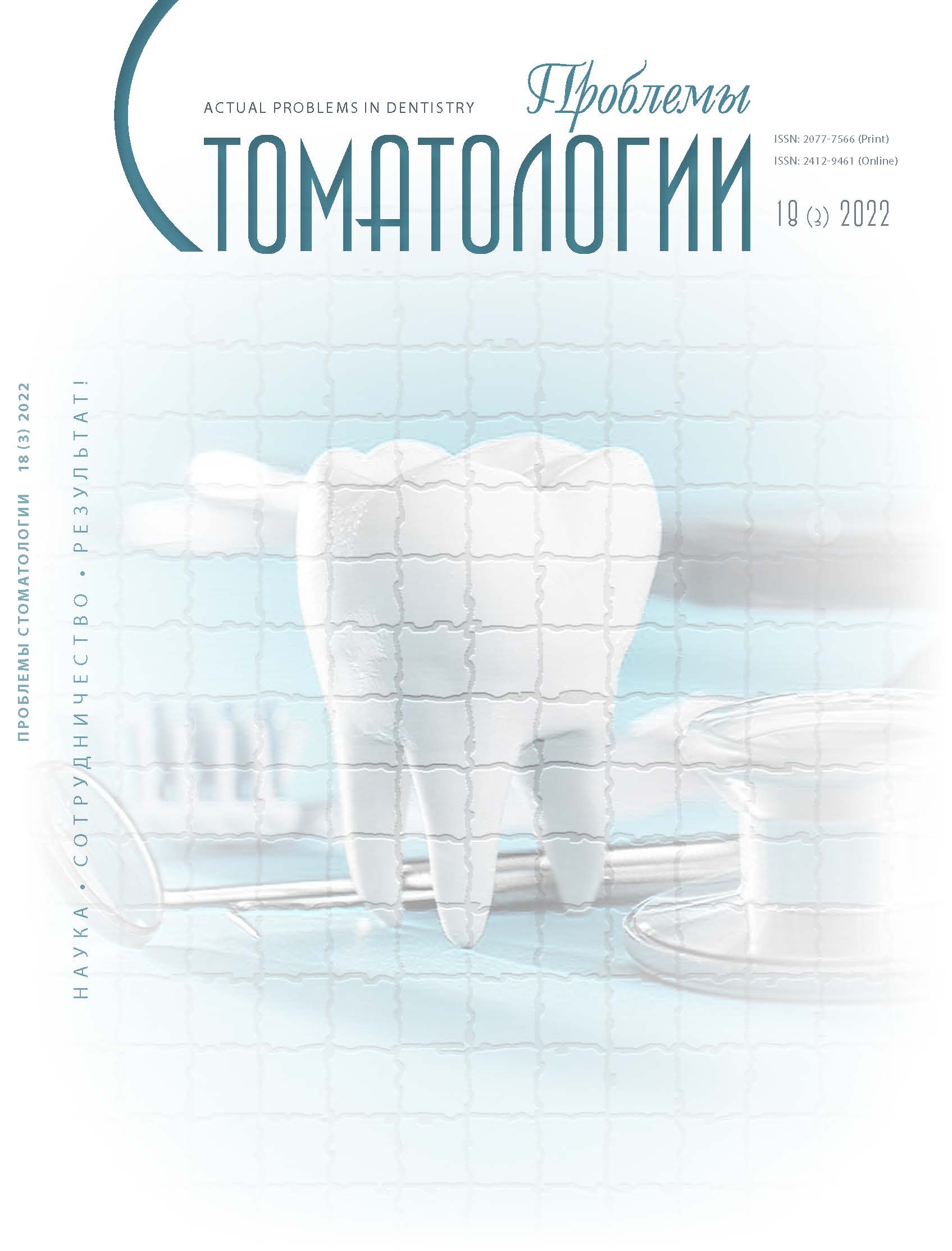from 01.09.2008 until now
Ural State Medical University (Department of Therapeutic Dentistry and Propaedeutics of Dental Diseases, Associate Professor of the Department)
Ekaterinburg, Ekaterinburg, Russian Federation
Yekaterinburg, Ekaterinburg, Russian Federation
Yekaterinburg, Ekaterinburg, Russian Federation
Ekaterinburg, Russian Federation
The widespread use of dental implants for the restoration of missing teeth has expanded the possibilities of treatment for both patients and dentists. After tooth extraction, the jaw bones decrease significantly in volume over time (atrophy). During the first year, 25% of bone tissue is lost in the area of the removed tooth, and in the next 2–3 years, bone tissue is reduced by 50% of the original volume. After the implants are installed, the loss of bone tissue stops. The increasing use of implants also necessitates both new studies of implant designs, materials, and technologies for the use of dental implants. Such research has increased dramatically over the past two decades and is expected to expand. The scientific literature we have studied shows that the success of dental implants largely depends on the quality and quantity of available bone in the recipient site. However, this may be disrupted or unavailable due to bone diseases, trauma, periodontal disease, etc., which, in turn, requires additional manipulations with the bone. Subject. Professional and psychological capabilities of a doctor to work effectively in a situation of uncertain outcome of a surgical operation. The relevance of this study is due to the need to prevent complications of implantation surgery in the professional activity of a dentist-surgeon in conditions of insufficient thickness of the alveolar process. The need for this study was also dictated by the needs of patients using implantological systems in maintaining the quality of life. The aim is to study the installation and preservation of the implant with insufficient thickness of the alveolar process. Methodology. A retrospective study of patients with insufficient thickness of the alveolar process who underwent implantation treatment was conducted. Patients were included in the study if they had one or more implants without clinical signs of implant mobility. Results. The patient was treated with surgical tactics with insufficient thickness of the alveolar process; antibacterial therapy; chemical decontamination and the imposition of an allogeneic graft. Conclusions. Bone expansion using a piezoscalpel is a reliable and relatively safe way to expand narrow ridges. The method of expansion of the bone ridge allows to obtain the optimal thickness of the bone for implantation of the implant. The expansion of atrophic rollers with the use of piezoscalpel is a technique that does not require bone collection, reducing the time of surgery and postoperative morbidity, which leads to a reduction in the duration of rehabilitation.
resource approach during complex surgical intervention, piezosurgery, splitting of the alveolar ridge, implantation, insufficient thickness of the alveolar process
1. Cullum D. Advances in bone manipulation: Part Osteomobilization for horizontal and vertical implant site development // SORMS. - 2010;18.5:1-44.3. https://c1-preview.prosites.com/36167/wy/docs/Cullum18[1].4H1.pdf
2. Simion M, Baldoni M, Zaffe D. Jawbone enlargement using immediate implant placement associated with a split-crest technique and guided tissue regeneration // Int J Periodontics Restorative Dent. - 1992;12:462-473. PMID: 1298734
3. Goyal S., Iyer S. Bone manipulation techniques // Int J Clin Implant Dent. - 2009;1:22-31.5. DOIhttps://doi.org/10.5005/JP-JOURNALS-10004-1003
4. Basa S., Varol A., Turker N. Alternative bone expansion technique for immediate placement of implants in the edentulous posterior mandibular ridge: A clinical report // Int J Oral Maxillofac Implants. - 2004;19:554-558. PMID: 15346753
5. Borgner R.A., Kirkos L.T., Gougaloff R., Cullen M.T., Delk P.L. Computerized tomography scan interpretation of a bone expansion technique // J Oral Implantol. - 1999;25:102-108. doi:https://doi.org/10.1563/1548-1336(1999)025<0102:CTSIOA>2.3.CO;2.
6. Siddiqui A.A., Sosovicka M. Lateral bone condensing and expansion for placement of endosseous dental implants: A new technique // J Oral Implantol. - 2006;32:87-94. doi:https://doi.org/10.1563/786.1.
7. Hahn J. Clinical uses of osteotomes // J Oral Implantol. - 1999;25:23-29. DOI:https://doi.org/10.1563/1548-1336(1999)025<0023:CUOO>2.3.CO;2
8. Demetriades N., Park J.I., Laskarides C. Alternative bone expansion technique for implant placement in atrophic edentulous maxilla and mandible // J Oral Implantol. - 2011;37:463-471. doi:https://doi.org/10.1563/AAID-JOI-D-10-00028.
9. Jensen O.T., Bell W., Cottam J. Osteoperiosteal aps and local osteotomies for alveolar reconstruction // Oral Maxillofac Surg Clin North Am. - 2010;22:331-346. doi:https://doi.org/10.1016/j.coms.2010.04.003.
10. Rodriguez R., Hartmann N., Weingart D. Current concepts of bone regeneration in implant dentistry // J Surg. - 2015;10:283-285. DOIhttps://doi.org/10.7438/1584-9341-10-4-4
11. El Haddad E., Lauritano D., Candotto V., Carinci F. Guided bone regeneration is a reliable technique in implant dentistry: An overview and a case report // OA Dentistry. - 2014;2:5. https://www.researchgate.net/publication/272281208_Guided_bone_regeneration_is_a_reliable_technique_in_implant_dentistry_An_overview_and_a_case_report
12. Ramos, Adilson, Santos, Monique, Almeida, Marcio, Mir, Carlos. Bone dehiscence formation during orthodontic tooth movement through atrophic alveolar ridges // The Angle orthodontist. - 2019:90. doi:https://doi.org/10.2319/063019-443.1.
13. Hao-yuan W.S., Huiqiang S., Guo-xia Li, Xin Shang, Zhen-zhen. The early phase response of rat alveolar bone to traumatic occlusion // Archives of oral biology. - 2012;57:737-743. doi:https://doi.org/10.1016/j.archoralbio.2012.01.002
14. Lekholm U., Brảnemark A.M. New surgical procedures of the osseointegration technique // Aust Prosthodont J. - 1993;7:25-32. PMID: 8054224
15. Nikol'skiy V.Yu., Vel'dyaksova L.V., Maksyutov A.E. Ocenka stepeni atrofii kostnoy tkani chelyustey posle udaleniya zubov v svyazi s dental'noy implantaciey. Saratovskiy nauchno-medicinskiy zhurnal. 2011;7(1):306-307. [V.Yu. Nikolsky, L.V. Veldyaksova, A.E. Maksyutov. Assessment of the degree of jaw bone atrophy after Dental extractions in connection with dental implantation. Saratov Journal of Medical Science. 2011;7(1):306-307. (In Russ.)]. https://elibrary.ru/item.asp?id=16910029
16. Kuri F. Regenerativnye metody v implantologii. Moskva : Azbuka. 2013:514. [F. Khoury. Regenerative methods in implantology. Moscow : Azbuka. 2013:514. (In Russ.)]. https://kingmed.info/knigi/Stomatologiya/Hirurgicheskaya_stomatologiya/book_4276/Regenerativnie_metodi_v_implantologii-Kuri_F_Hanzer_T_Kuri_Ch-2013-pdf
17. Hahn J. Clinical use of osteotomes // J Oral Implantol. - 1999;25:23-29. doi:https://doi.org/10.1563/1548-1336(1999)025<0023:CUOO>2.3.CO;2.
18. Chernavskiy A.F., Badalyan A.A. Retrogradnyy periimplantit (Klinicheskiy sluchay). Problemy stomatologii. 2022;18(1):108-113. [A.F. Chernavsky, A.A. Badalyan. Retrograde periimplantitis (Clinical case). Actual problems in dentistry. 2022;18(1):108-113. (In Russ.)]. https://elibrary.ru/item.asp?id=48465293
19. Badalyan A.A., Chernavskiy A.F., Petrov I.A., Blind E.B. Kliniko-psihologicheskoe obosnovanie ispol'zovaniya dlya pozicionirovaniya dental'nyh implantatov hirurgicheskih shablonov na klinicheskom primere mau "sp № 12". Problemy stomatologii. 2018;14(2):62-67. [A.A. Badalyan, A.F. Chernavsky, I.A. Petrov, E.B. Blind. Clinical and psychological justification of the use of surgical templates for positioning dental implants on the clinical example of UIA "sp No. 12". Actual problems in dentistry. 2018;14(2):62-67. (In Russ.)]. https://elibrary.ru/item.asp?id=35295787
20. Danilova N.N. Psihofiziologicheskaya diagnostika funkcional'nyh sostoyaniy. Moskva : Izdatel'stvo MGU. 1992:192. [N.N. Danilova. Psychophysiological diagnostics of functional states. Moscow : Publishing House of Moscow State University. 1992:192. (In Russ.)]. http://www.psy.msu.ru/people/danilova/danilova1992.pdf
21. Kulakov S.A. Osnovy psihosomatiki. Spb. : Rech'. 2007:288. [S.A. Kulakov. Fundamentals of psychosomatics. St. Petersburg : Speech. 2007:288. (In Russ.)]. https://www.klex.ru/ek6
22. Broytigam V., Kristian P., Rad M. Psihosomaticheskaya medicina. Kratkiy uchebnik. Moskva : GEOTAR MEDICINA. 1999:376. [V. Broytigam, P. Christian, M. Rad. Psychosomatic medicine. A short textbook. Moscow : GEOTAR MEDICINE. 1999:376. (In Russ.)]. https://www.studmed.ru/view/broytigam-v-kristian-p-rad-m-psihosomaticheskaya-medicina_8f889b4e3dc.html
23. Sidorov P.I., Solov'ev A.G., Novikova I.A. Psihosomaticheskaya medicina. Rukovodstvo dlya vrachey. Moskva : MEDpress-inform. 2006:568. [P.I. Sidorov, A.G. Soloviev, I.A. Novikov. Psychosomatic medicine. A guide for doctors. Moscow : MEDpress-inform. 2006:568. (In Russ.)]. https://cyberleninka.ru/article/n/sidorov-p-i-soloviev-a-g-novikova-i-a-psihosomaticheskaya-meditsina-rukovodstvo-dlya-vrachey-pod-red-p-i-sidorova-m-medpress-inform-2006-568-s
24. Chernavskiy A.F., Petrov I.A., Gavrilova A.S., Chernavskiy M.A. Empiricheskoe issledovanie stressoustoychivosti u medicinskih rabotnikov v usloviyah municipal'nogo stomatologicheskogo uchrezhdeniya. Problemy stomatologii. 2016;3:107-114. [A.F. Chernavsky, I.A. Petrov, A.S. Gavrilova, M.A. Chernavsky. An empirical study of stress resistance in medical workers in the conditions of a municipal dental institution. Actual problems in dentistry. 2016;3:107-114. (In Russ.)]. https://elibrary.ru/item.asp?id=26717422
25. Rusakova I.V., Chernavskiy A.F., Belova O.Yu., Neupokoeva L.Yu. Standartizaciya stomatologicheskoy pomoschi (metodicheskie ukazaniya). Uchebnoe posobie. Ekaterinburg : Izdatel'skiy Dom "Tirazh". 2019:140. [I.V. Rusakova, A.F. Chernavsky, O.Yu. Belova, L.Yu. Neupokoeva. Standardization of dental care (guidelines). A textbook. Yekaterinburg : Publishing House "Circulation". 2019:140. (In Russ.)]. https://dental-press.ru/ru/nauka/textbook/2603/view




















